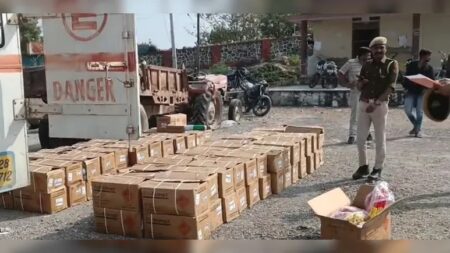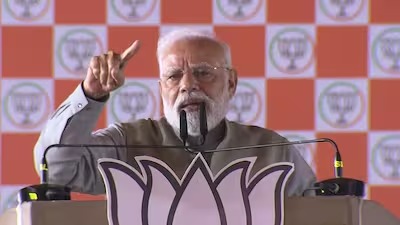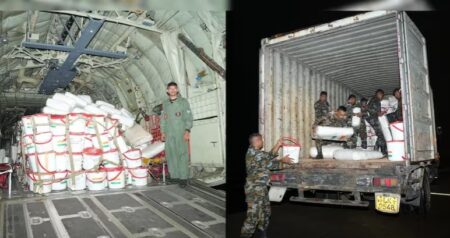According to sources, a post-conflict assessment of the military engagement in early May has revealed heavy damage to Pakistani aerial and ground military assets.
New Delhi: A post-conflict assessment of Operation Sindoor, India’s retaliatory strike following the deadly Pahalgam terror attack in Jammu and Kashmir, has revealed substantial damage to Pakistan’s aerial and ground military infrastructure, sources said.
According to intelligence inputs and defence sources, Indian forces destroyed six Pakistan Air Force (PAF) fighter jets during aerial dogfights, two high-value surveillance aircraft, more than ten armed drones, and a C-130 Hercules transport aircraft in targeted precision strikes conducted between May 6 and 10.
The engagement began after the April 22 terror attack in Pahalgam, which claimed 26 Indian lives. India launched Operation Sindoor in response, targeting terrorist infrastructure and later expanding operations in reaction to Pakistani missile and drone attacks.
Breakdown of Pakistani Losses
Fighter Jets:
Six Pakistani fighter jets were destroyed during intense air-to-air engagements over Pakistani Punjab and Pakistan-occupied Jammu and Kashmir (PoJK). Indian air defence systems and airborne warning assets tracked and confirmed the downing of these jets using radar data and thermal signatures.
Surveillance Aircraft:
Two high-value surveillance platforms were neutralized. One of the aircraft, believed to be either an electronic warfare or AEW&C (Airborne Early Warning and Control) platform, was taken out at a distance of 300 km using the Sudarshan long-range missile system. Another AEW&C aircraft of Swedish origin, stationed at Bholari airbase, was destroyed in an air-to-surface cruise missile strike that also obliterated its hangar.
C-130 Hercules:
A Pakistani C-130 Hercules, used for logistical support, was destroyed in a drone strike while parked at a forward airbase near Multan. The strike, carried out by Indian drone assets, targeted the aircraft on the ground.
UCAVs (Drones):
Over ten Chinese-origin Wing Loong UCAVs were destroyed during a coordinated strike on a drone hangar. The mission, involving Rafale and Su-30 jets, struck the facility believed to be housing the drones. Additionally, several Pakistani drones were intercepted and shot down over Indian airspace, especially in Jammu & Kashmir and Rajasthan.
Extended Reach of Indian Strikes
Leaked Pakistani military documents on Operation Bunyan un Marsoos—Pakistan’s codename for its response—reveal that India struck deeper into Pakistani territory than initially disclosed. Indian forces reportedly hit seven additional strategic locations: Peshawar, Jhang, Hyderabad (Sindh), Gujrat (Punjab), Bahawalnagar, Attock, and Chor—each of which hosts critical military or dual-use infrastructure.
Initial Indian strikes between May 6 and 7 focused on terror camps, including:
• Jaish-e-Mohammed HQ in Bahawalpur
• Lashkar-e-Taiba camp in Muridke
• Terror facilities in Muzaffarabad, Kotli, Rawalakot, Bhimber, and Chakwal
Satellite imagery from Maxar Technologies confirmed widespread destruction, especially in PoJK-based training centers.
Escalation and Wider Conflict
Following India’s focused anti-terror strikes, Pakistan escalated the conflict by launching drones and ballistic missiles targeting Indian civilian areas in Rajasthan and military installations in Jammu and Gujarat on May 8.
In response, India expanded its operations to include 11 Pakistani airbases: Nur Khan, Rafiqui, Murid, Sukkur, Sialkot, Pasrur, Chunian, Sargodha, Skardu, Bholari, and Jacobabad. Multiple long-range precision strikes crippled Pakistan’s operational capability and prompted a swift reassessment in Islamabad.
Ceasefire and Diplomatic Closure
On May 10, facing mounting battlefield setbacks and international diplomatic pressure, Pakistan’s Director General of Military Operations (DGMO), Major General Kashif Abdullah, reached out to his Indian counterpart, Lt. Gen. Rajiv Ghai, to request an immediate ceasefire.
India accepted the request but made it clear that any further provocation would invite a strong and calibrated military response.
As the dust settles, India’s high-level military and intelligence assessments continue, with a formal report on enemy losses expected to be released by defence authorities soon.
1
/
6
#JustCasual || Govind Gaude|| “There Was A Supari Taken To Target Me”
#JustCasual! || “MY FIGHT TO SAVE GOA WILL CONTINUE”: Rama Kankonkar
Just Casual with Dr Pratiksha Khalap||“Not Here Because of Khalap Surname”
#JustCasual With Felly Gomes || Goenkarank Bhivpachi Garaz Aasa, he says
#JustCasual || With Mandar Rao Desai ”GOLDEN BOY OF GOAN FOOTBALL”
#JustCasual || Warren Alemao: Don’t Vote Me As Alemao, Vote Me For My Work
1
/
6








